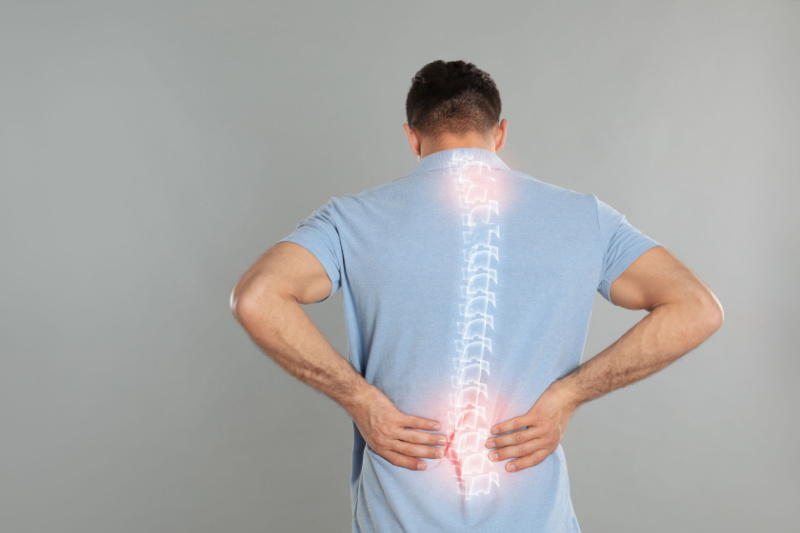Osteoporosis is a condition that makes your bones fragile to the point where simple actions like bending can lead to fractures. However, with the right medication, a nutritious diet, and regular weight-training exercises, bone deterioration can be managed or even improved.
What you need to know:
- What is osteoporosis?
- Causes of osteoporosis
- Signs and symptoms of osteoporosis
- Risk factors for osteoporosis
- Prevention of osteoporosis
What is osteoporosis?

Osteoporosis is a serious bone condition characterized by decreased bone density and mineral density, leading to lesser bone strength. As a result, individuals with osteoporosis are more susceptible to fractures, especially in areas like the hip, spine, and wrist. Often referred to as a “silent” disease, its presence might remain undetected until a bone unexpectedly breaks. It predominantly affects postmenopausal women and older men, making them more prone to fractures.
Causes of osteoporosis
Several factors can cause osteoporosis in an individual. Some osteoporosis causes include:
- Age: As you age, your bone regeneration slows down while your bone density accelerates, elevating the risk of osteoporosis.
- Gender: Women are more susceptible, primarily because they generally have a smaller bone structure and lower peak bone mass than men. However, men aren’t exempt from this condition, particularly those over 70 years of age.
- Family history: A familial history of osteoporosis or hip fractures can increase the risk of you getting osteoporosis.
Signs and symptoms of osteoporosis
In the initial phases of bone degradation, signs are often silent. However, as osteoporosis progresses and bones become more fragile, you could experience the following symptoms:
- Discomfort in the back due to fractures or compressions in the spine
- A noticeable reduction in stature with the passing of time
- A bent-forward stance
- Bones that fracture surprisingly easily
Risk factors for osteoporosis
Some of the most common risk factors for osteoporosis are:
- Age: Advancing years increase osteoporosis susceptibility.
- Genetics: If osteoporosis runs in your family, especially if a parent had a hip fracture, your risk amplifies.
- Gender: Women face a significantly higher osteoporosis likelihood compared to men.
- Physique: Individuals with a slim body generally have a heightened risk due to potentially lesser bone reserves as they mature.
Lifestyle changes
Those who sit or remain inactive for a long time face a greater risk of osteoporosis compared to active individuals. Here are some lifestyle changes you can employ to fight osteoporosis:
- Physical exercises: Weight-lifting exercises and posture-enhancing activities can increase bone strength. Activities like walking, running, jumping, dancing, and weightlifting are also effective in reducing the risk of osteoporosis.
- Stop drinking and smoking: Restrict yourself from smoking and drinking at all as they weaken your bone structure and immune system.
Prevention of osteoporosis

Healthy nutrition and regular exercise can keep your bones strong for all your life.
- Calcium: For individuals aged between 18 to 50, a daily calcium intake of 1,000 milligrams is recommended. Notable calcium-rich foods that can help increase bone density include low-fat dairy items, a variety of dark green vegetables like cabbage, broccoli and okra, fish like salmon and sardines that retain their bones, tofu, and a range of products such as some cereals and orange juices. You can also have nuts and flour butter.
- Vitamin D: Vitamin D can enhance your body’s ability to absorb calcium and bone strength. You can get it from natural sunlight. Dietary supplements of vitamin D include trout, salmon and liver oil. An average adult requires at least 600 units of vitamin D a day.
Precaution is better than cure. So, the best way to fight osteoarthritis is to strengthen your bones before osteoporosis can affect you.
Stay tuned to the Activ Living Community. Keep up to date with the latest health tips and trends through expert videos, podcasts, articles, and much more in nutrition, fitness, mindfulness, and lifestyle conditions like Asthma, Blood Pressure, Cholesterol, and Diabetes.
You may also be interested in the following blogs:
- What Are The Early Breast Cancer Warning Signs? That Can Help You Detect It At An Early Stage
- 7 Lifestyle Changes To Fight Lung Cancer
Popular Searches
How to lower blood pressure | Fruits good for liver | Unhealthy foods | Ragi Benefits | Basal Metabolic Rate | Acupressure points for High Blood Pressure | Ayurvedic medicine for blood pressure | How to control cholesterol at home | Homeopathy for Asthma | Biological Age | Home remedies for TB | Natural beta blockers | Negative effects of internet | Types of walking | Blood pressure calculator | Blood sugar calculator | BMI Calculator





 1800-270-7000
1800-270-7000






